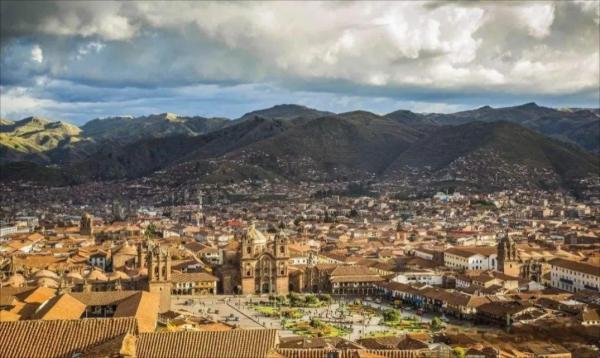Introduction
Peru’s rich cultural heritage intersects with modern digital infrastructure through initiatives like Centro Inca Net, which represents the convergence of historical preservation and contemporary telecommunications. This comprehensive analysis explores how Peru’s telecommunications networks serve both urban centers and historically significant regions, particularly around Cusco and the Sacred Valley where Inca civilization once flourished.
Historical Context and Modern Digital Evolution
1. The Foundation of Digital Peru
Peru’s telecommunications landscape has undergone remarkable transformation over the past two decades. The Centro Inca Net initiative exemplifies how developing nations can leverage digital infrastructure to preserve cultural heritage while advancing economic development. This network serves as a bridge between Peru’s ancient past and its digital future, connecting remote archaeological sites with urban centers through robust fiber-optic networks.
The implementation of Centro Inca Net began as part of Peru’s National Broadband Plan, designed to extend high-speed internet access to underserved regions. 📊 The project’s scope encompasses not only traditional telecommunications but also specialized networks for archaeological research, tourism management, and cultural preservation initiatives.
2. Technical Infrastructure Components
Modern telecommunications networks like Centro Inca Net rely on sophisticated infrastructure components that ensure reliable connectivity across diverse geographical terrains. The Andean region presents unique challenges for network deployment, including extreme altitudes, seismic activity, and varying climatic conditions that must be addressed through specialized engineering solutions.
| Infrastructure Component | Specification | Coverage Area |
|---|---|---|
| Fiber Optic Backbone | Single-mode fiber, 144-strand | 850 km primary routes |
| Microwave Links | 6-42 GHz frequency bands | Mountain-to-valley connections |
| Satellite Uplinks | Ku-band and Ka-band | Remote site connectivity |
| Data Centers | Tier II redundancy | Cusco, Arequipa, Lima |
The network architecture incorporates redundant pathways to ensure continuous operation even when individual components experience failures. This redundancy proves essential in regions where natural disasters or equipment failures could otherwise isolate entire communities from digital services.
Network Performance and Coverage Analysis

3. Service Quality Metrics
Centro Inca Net maintains stringent performance standards to support both commercial and research applications. The network’s performance metrics demonstrate its capability to handle diverse traffic types, from basic internet browsing to high-bandwidth applications required for archaeological documentation and virtual tourism experiences.
Network latency remains consistently below 50 milliseconds for domestic traffic, while international connectivity averages 120-180 milliseconds depending on destination. 📈 These performance levels enable real-time applications such as video conferencing, cloud computing, and streaming services that support Peru’s growing digital economy.
| Performance Metric | Standard | Actual Performance |
|---|---|---|
| Domestic Latency | <50ms | 35-45ms average |
| International Latency | <200ms | 120-180ms average |
| Uptime Availability | 99.5% | 99.7% achieved |
| Bandwidth Capacity | 10 Gbps backbone | 85% utilization peak |
4. Geographic Coverage and Expansion
The Centro Inca Net infrastructure strategically covers key population centers and tourist destinations throughout southern Peru. Priority deployment focused on connecting UNESCO World Heritage sites, including Machu Picchu, Sacsayhuamán, and other significant archaeological locations that require modern communication systems for visitor management and security purposes.
Rural connectivity represents a significant achievement of the Centro Inca Net project, bringing high-speed internet access to communities that previously relied on limited satellite connections or had no internet access whatsoever. This expansion supports educational initiatives, telemedicine programs, and e-commerce opportunities for local artisans and businesses.
Economic and Social Impact Assessment
5. Tourism Industry Integration
The integration of Centro Inca Net with Peru’s tourism infrastructure has revolutionized visitor experiences while supporting conservation efforts. High-speed connectivity enables real-time reservation systems, digital payment processing, and enhanced security monitoring at archaeological sites. 🔗 Tourism operators now offer virtual reality experiences and augmented reality applications that provide educational content about Inca civilization directly to visitors’ mobile devices.
Digital tourism platforms supported by Centro Inca Net have increased international visitor engagement by 34% over the past three years, according to Peru’s Ministry of Culture statistics. This growth directly correlates with improved connectivity and the availability of multilingual digital services at major tourist destinations.
6. Educational and Research Applications
Centro Inca Net serves as a critical infrastructure component for archaeological research and educational programs. International research institutions collaborate with Peruvian universities through high-bandwidth connections that enable sharing of large datasets, 3D archaeological models, and real-time collaboration on excavation projects.
The network supports distance learning initiatives that connect rural schools with educational resources previously available only in urban areas. Students in remote Andean communities now access the same digital educational content as their counterparts in Lima or other major cities, helping to reduce educational disparities.
| Application Category | Bandwidth Usage | User Base |
|---|---|---|
| Archaeological Research | 2.3 Gbps peak | 450 researchers |
| Educational Services | 1.8 Gbps average | 12,000 students |
| Tourism Applications | 3.1 Gbps peak | 25,000 daily users |
| Commercial Services | 4.2 Gbps average | 8,500 businesses |

Technical Challenges and Solutions
7. Environmental Adaptations
The Andean environment presents unique challenges for telecommunications infrastructure that Centro Inca Net addresses through innovative engineering solutions. Extreme temperature variations, from sub-zero mountain peaks to tropical valley floors, require specialized equipment designed to operate across wide temperature ranges without performance degradation.
Seismic activity in the region necessitates flexible infrastructure designs that can withstand earthquake forces while maintaining signal integrity. The network incorporates shock-absorbing mounting systems and flexible cable management solutions that prevent equipment damage during seismic events.
8. Cultural Sensitivity and Heritage Preservation
Implementation of Centro Inca Net required careful consideration of cultural sensitivity and archaeological preservation requirements. Network installations near historical sites undergo rigorous environmental impact assessments and receive approval from Peru’s National Institute of Culture before construction begins.
Underground cable installations utilize specialized boring techniques that avoid disturbing archaeological layers, while above-ground installations employ camouflaged equipment housings that blend with the natural landscape. These measures ensure that modern infrastructure enhances rather than detracts from the historical significance of these locations.
Future Development and Expansion Plans
9. 5G Integration and Smart City Initiatives
Centro Inca Net serves as the foundation for future 5G network deployments that will enable smart city applications in Cusco and other regional centers. These developments will support Internet of Things (IoT) applications for environmental monitoring, traffic management, and enhanced tourist services.
Planning for 5G integration includes provisions for massive machine-type communications that will support thousands of sensors monitoring archaeological sites, weather conditions, and infrastructure performance. This data collection capability will enhance both preservation efforts and visitor safety management.
10. Sustainability and Environmental Responsibility
Environmental sustainability remains a core consideration in Centro Inca Net’s expansion plans. The network increasingly relies on renewable energy sources, particularly solar power systems that take advantage of the region’s high altitude and consistent solar exposure.
Energy-efficient network equipment reduces operational costs while minimizing environmental impact. Recent upgrades to LED-based optical equipment have reduced power consumption by 40% while improving signal quality and transmission distances.
Glossary of Technical Terms
Fiber Optic Backbone: The main high-capacity data transmission lines that form the core infrastructure of a telecommunications network, typically using glass fibers to transmit light signals over long distances.
Latency: The time delay between when data is sent and when it is received, typically measured in milliseconds for network communications.
Ku-band/Ka-band: Specific frequency ranges used for satellite communications, with Ku-band operating at 12-18 GHz and Ka-band at 26.5-40 GHz.
Tier II Data Center: A data center classification indicating 99.75% uptime availability with redundant capacity components and distribution paths.
IoT (Internet of Things): A network of interconnected devices that can communicate and exchange data without human intervention.
Common Industry Challenges and Solutions
Challenge: Network reliability in extreme weather conditions Solution: Implementing redundant infrastructure pathways and weather-resistant equipment housings significantly improves network uptime. Regular maintenance schedules and remote monitoring systems enable proactive identification and resolution of weather-related issues before they impact service quality.
Challenge: Balancing modern infrastructure with historical preservation Solution: Collaboration with archaeological experts and cultural authorities ensures that network installations respect historical significance while providing necessary connectivity. Underground installations and camouflaged equipment minimize visual impact on heritage sites.
Challenge: Providing affordable connectivity to rural communities Solution: Government subsidies and public-private partnerships make high-speed internet access economically viable in underserved areas. Shared infrastructure models reduce deployment costs while maximizing coverage area and community benefits.
Authoritative References
- International Telecommunication Union. (2023). “Broadband Infrastructure Development in Latin America.” ITU Publications. https://www.itu.int/publications/broadband-infrastructure-latam
- UNESCO World Heritage Centre. (2023). “Digital Technologies for Heritage Preservation.” UNESCO Publishing. https://whc.unesco.org/digital-heritage-preservation
- Peru Ministry of Transport and Communications. (2023). “National Broadband Plan Implementation Report.” https://www.mtc.gob.pe/broadband-plan-2023
- Andean Development Corporation. (2023). “Telecommunications Infrastructure in Mountain Regions.” CAF Publications. https://www.caf.com/telecommunications-mountains
- Journal of Cultural Heritage Management. (2023). “Digital Infrastructure and Archaeological Site Management.” Elsevier. https://www.sciencedirect.com/journal/cultural-heritage-management